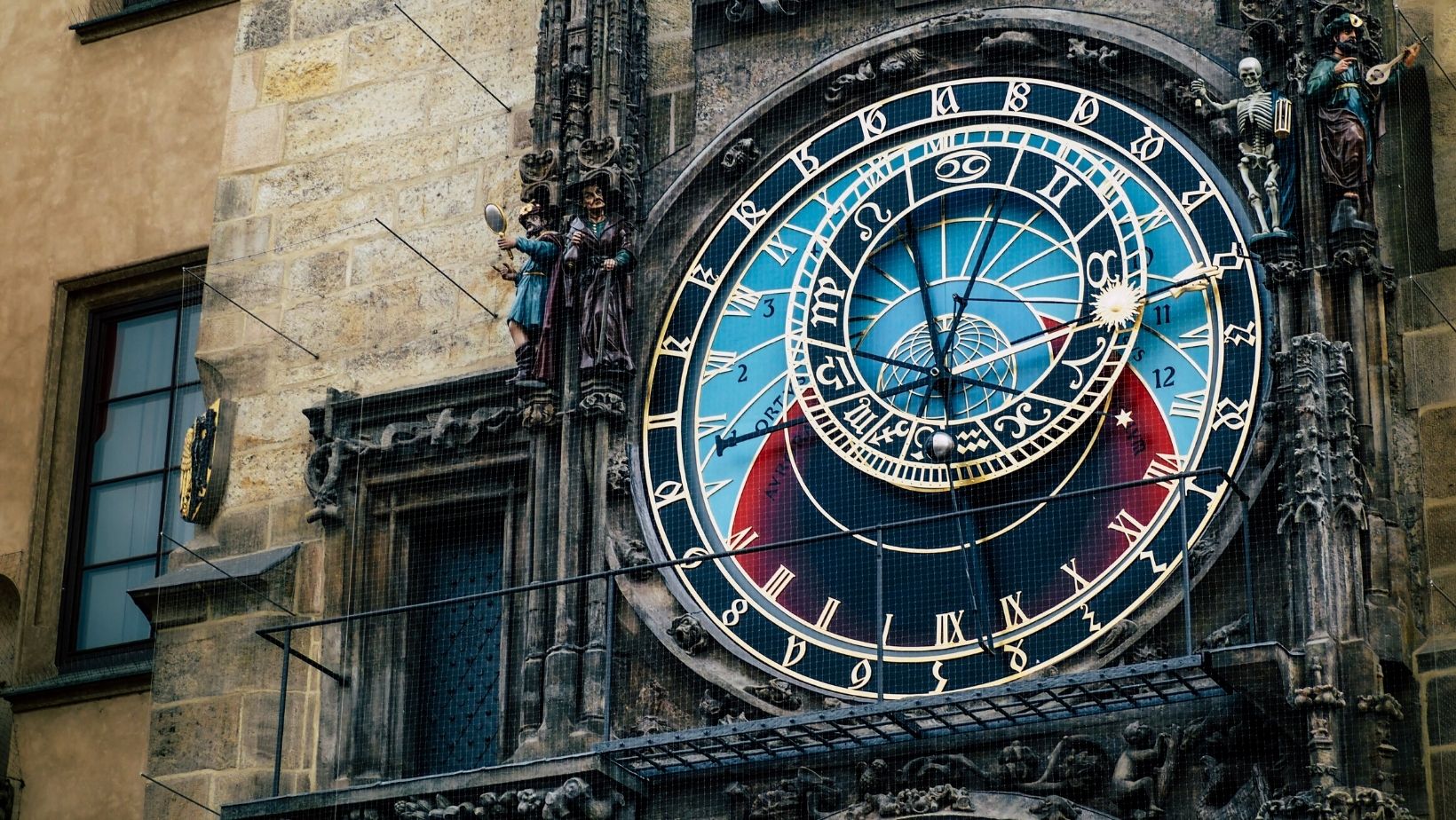The oldest part of the Orloj, the mechanical clock and astronomical dial, dates back to 1410 when it was made by clockmaker Mikuláš of Kadaň and Jan Šindel, then later a professor of mathematics and astronomy at Charles University.
The first recorded mention of the clock was on 9 October 1410. Later, presumably around 1490, the calendar dial was added and the clock facade was decorated with gothic sculptures.
The Prague Astronomical Clock is a unique medieval monument. It was built during the last breaths of the cultural boom in the Bohemian lands that began under the reign of Charles IV, Bohemian king and Holy Roman Emperor, who transformed Prague into a European centre of learning, culture and power.
The Old Town Astronomical Clock was built as one of the last medieval archaic astronomical clocks. These served a different purpose and were of a different character than the modern astronomical clocks that emerged in Europe with the onset of the Renaissance.
Its main dials – astrolabes – were not designed to work like accurate astronomical instruments, but were to be used above all for astrological purposes. Their design is also fundamentally opposite to the construction of astronomical astrolabes.
Unlike most astronomical clocks of the time, which were made particularly for the interior of churches, the Prague Astronomical Clock was built in between the buttresses of the Old Town Hall tower with great sensitivity.
The Old Town Astronomical Clock is a complicated and multilayered work. The richly sculptured ornamentation and painted pictorial calendar plate enhance the central motif of the astronomical clock which is its top dial – astrolabe.
The astrolabe of the medieval clock is a rotating image of the heavens – the heavens showing the movement of the Sun, Moon and stars, as well as the heavens that are the seat of God.
To the medieval man, the astronomical clock seemed like a true miracle. He admired the fact that its creator had managed not only to understand the movement of the Sun and Moon across the sky but also to imitate it.
Everyone could read the details from its astrolabe – the actual time, day in the year or how favourable the constellation of the heavens with the stars, Sun and Moon is in the life of the individual.
Support Prague Morning!
We are proud to provide our readers from around the world with independent, and unbiased news for free.
Our dedicated team supports the local community, foreign residents and visitors of all nationalities through our website, social media and newsletter.
We appreciate that not everyone can afford to pay for our services but if you are able to, we ask you to support Prague Morning by making a contribution – no matter how small 🙂 .





